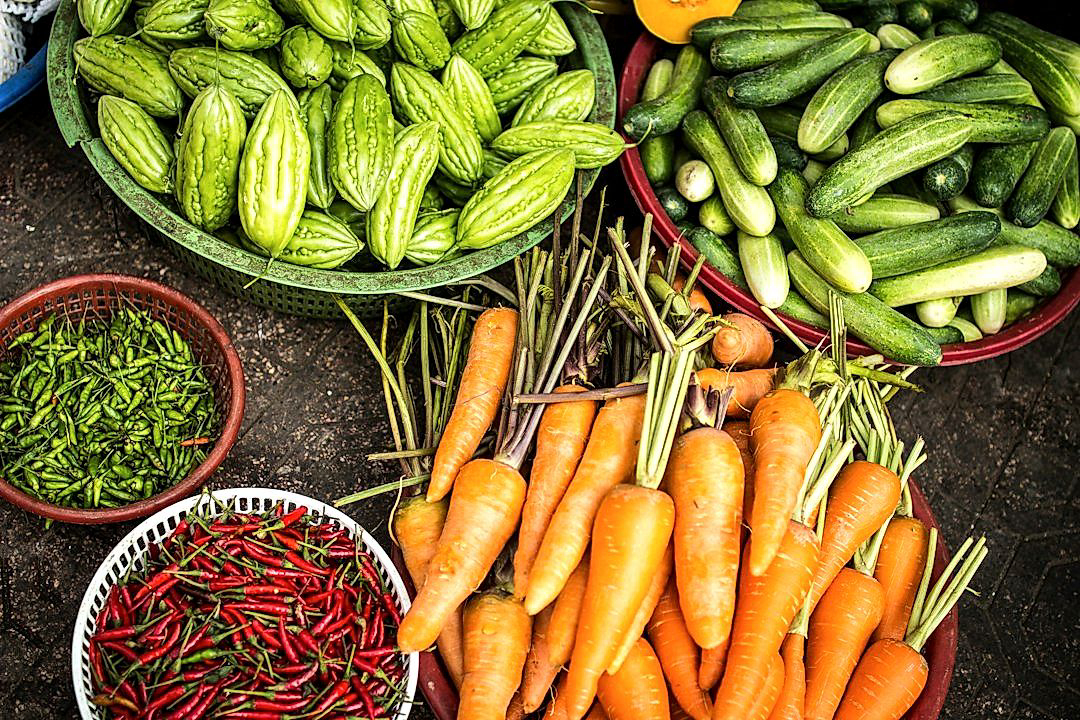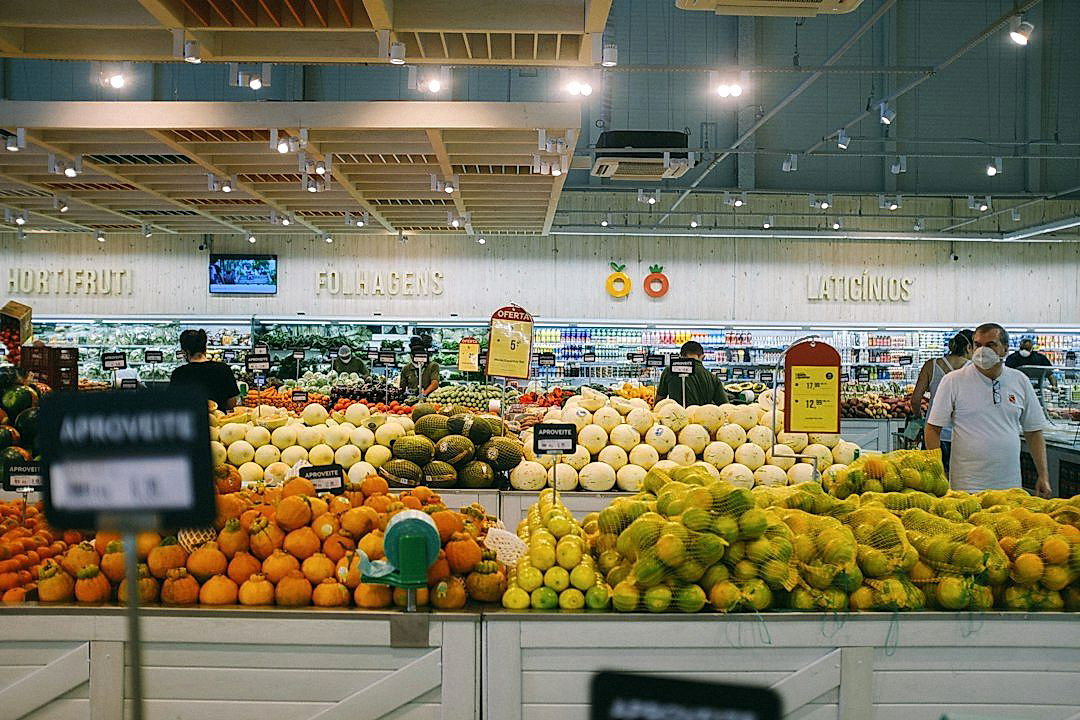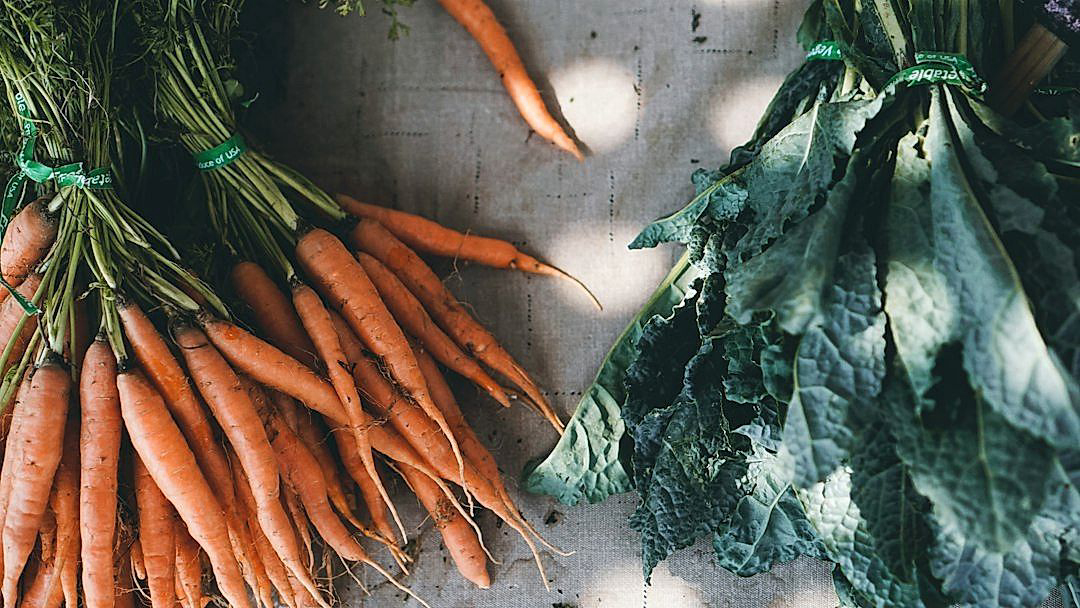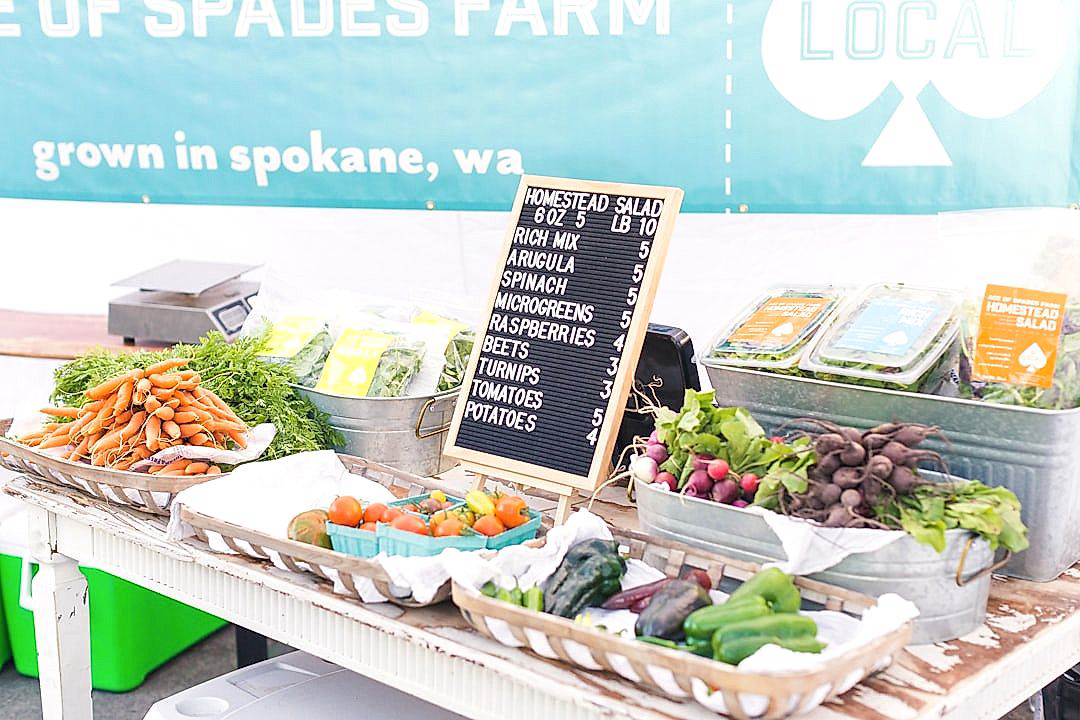In today’s rapidly evolving digital world, the agricultural industry has not been left behind.
Advanced technologies are increasingly making their way into various aspects of this sector, most prominently in the realm of produce retail.
A new epoch of shopping conveniences and enhanced customer experiences is being ignited by these breakthroughs.
This transformation is reshaping the face of retail operations, and inevitably, the consumer’s shopping practices.
It’s vital for those in the sector to stay abreast of these developments.
Hence, we highlight some groundbreaking technological innovations in the produce retail sector that are currently changing the game.
Contents
- Tech Innovations In Produce Retail You Must Know
- 1. RFID Technology for Fresh Produce Tracking
- 2. AI for demand forecasting and inventory management
- 3. Drones for Indoor Farm Monitoring
- 4. Augmented Reality for Interactive Shopping Experience
- 5. Blockchain for traceability and transparency
- 6. Robotic harvesting and packing systems
- 7. IoT for Real-Time Produce Quality Control
- The Bottom Line
Tech Innovations In Produce Retail You Must Know
1. RFID Technology for Fresh Produce Tracking
One of the most revolutionizing technology advancements in the retail industry, particularly for fresh produce, has been the application of Radio Frequency Identification (RFID) technology.
RFID provides a seamless and efficient way of tracking produce from the farm to the retail shelves.
This technology involves attaching a small chip or a tag to each package or pallet of produce, which then emits radio signals to be read by RFID scanners.
These tags contain unique identification numbers which provide key details about the product such as its origin, harvest time, and destination.
RFID technology markedly enhances inventory accuracy, as it provides real-time data about where the produce is, and in what quantity.
RFID technology reduces losses due to spoilage and misplacement, and greatly improves the speed and efficiency of operations.
The technology also plays a significant role in improving supply chain transparency.
By presenting real-time data about the products’ journey from farm to retail store, RFID helps retailers ensure the freshness and quality of the products.
Moreover, this increased transparency helps to build trust with consumers who are becoming increasingly conscious about the origin and freshness of the produce they purchase.
Additionally, RFID technology streamlines the recall processes.
In case of a recall, instead of having to remove all products, retailers can use the information in the RFID tags to precisely identify and remove only the affected batches.
Therefore, this implies minimizing losses and reducing the chance of reputational damage.
Also, the use of RFID technology facilitates the automation of checkout processes.
RFID scanners can scan multiple items simultaneously, even without direct line of sight. This not only speeds up the checkout process but also helps reduce queues and improve customer experience.
Moreover, RFID technology also aids in loss prevention by detecting theft and shrinkage.
With the aid of RFID tags and readers, potential thefts can be detected and prevented, thereby reducing losses for the retailer.
While RFID technology comes with an initial set up cost, the benefits it brings in terms of freshness tracking, supply chain efficiency, inventory management, loss reduction, and improving customer experience, makes it an excellent investment.
Therefore, it’s clear that the use of RFID technology for fresh produce tracking is a crucial tech innovation in produce retail.
2. AI for demand forecasting and inventory management
The advent of artificial intelligence (AI) has reshaped the way producers and retailers handle demand forecasting and inventory management.
Traditionally, these were based on historical sales data and were by nature retrospective and often inaccurate.
AI, with capabilities of predictive analytics, can analyze a much broader range of data points in real-time.
It can consider factors such as market trends, weather patterns, current sales, and even social media sentiment, allowing for accurate forecasting.
With this level of precision, it is possible to streamline the supply chain, reduce wastage, and ultimately increase profitability.
This advanced technology provides a solid foundation for forecasting demand, managing inventory and ensuring uninterrupted flow of fresh produce through the retail supply chain.
Fruitful use of AI reduces uncertainties and disrupts the traditional way of managing stocks by dynamically predicting market behavior.
A complex AI algorithm is used to process and analyze massive volumes of data, unearthing patterns, trends, and insights that were previously unseen or misunderstood.
This, in turn, allows retailers to make more educated decisions based on robust data analysis, rather than on intuition or simplistic forecasting models.
Inventory management is also significantly improved with AI.
It provides precise, real-time updates of the stocks, helping to avoid overstocking or understocking situations that could lead to wasted produce or missed sales.
Moreover, AI-driven systems can automate the reordering process, proactively replenishing stocks based on future demand predictions and sales velocity.
An AI-powered approach in the retail produce sector improves operational efficiency, cuts costs, and enhances the customer shopping experience.
Undoubtedly, artificial intelligence technology holds great promise for the future of demand forecasting and inventory management in retail produce.
It unlocks new opportunities to deliver the highest level of precision and performance in these areas, pushing the produce retail industry towards a more sustainable and profitable future.
3. Drones for Indoor Farm Monitoring
Indoor farming has become increasingly prevalent particularly with the need for optimized space and resource utilization in urban areas.
The precision and in-depth monitoring of these indoor farms largely contribute to their success, and for this purpose, the use of drone technology is gaining popularity.
Drones, equipped with advanced sensors and cameras, provide a series of real-time data that aids in the proper monitoring and management of indoor farms.
A significant feature of these drones is the ability to measure the plant vital signs including temperature, moisture levels, and nutrient concentration among others.
This thorough monitoring enables the farmer to understand the exact needs of the crops and intervene swiftly and precisely when necessary.
Furthermore, drones equipped with infrared cameras are capable of identifying sick or unhealthy plants even before it is evident to the human eye.
The drones carry out a detailed analysis of the chlorophyll content of plants, which is a reliable indication of their health.
The drone technology also provides other utilities such as pesticide application.
Drones are capable of targeted spraying which not only reduces the usage of chemicals, but also prevents unnecessary chemical exposure of healthy plants.
In addition to all these applications, drones also bring in the advantage of saving significant amounts of time and labor.
They automate the monitoring process, making indoor farming a much more cost-efficient practice.
The information gathered by the drones provides a detailed and deeper insight into the growth cycle of the plants allowing the predictable and accurate harvest times.
More advanced drone technology can also perform pollination tasks, eliminating the need for manual pollinators like bees or human labor.
Drones due to their mechanical precision offer a more uniform and efficient pollination.
With regular and accurate farm data, proactive steps can be taken to avoid potential issues or losses, offering a strategic advantage to the indoor farmers.
Thus, the inclusion of drone technology in indoor farming brings in a plethora of advantages making it an essential tech innovation in produce retail that you must be familiar with.
4. Augmented Reality for Interactive Shopping Experience
Augmented reality (AR) is an emerging technology with huge potential for influencing the shopping experience within the retail sector, particularly in the produce industry.
An interactive AR shopping experience might transform the traditional physical shopping into something more engaging, informative, and entertaining.
By leveraging AR, customers can get additional information about a product by simply pointing their smartphones at it.
Say, for example, one could gain insights about the nutritional information, farm origin, recipe options and more, of the fresh produce they’re considering to buy, thus adding an informative layer to their shopping experience.
AR can thus transform and elevate the customer’s purchase decision process without requiring physical interactions and aid in making informed choices.
Moreover, AR can also prove to be a solution to the societal changes brought about by the COVID-19 pandemic, making shopping safer through decreased physical interactions.
A major advantage of using AR in produce retail is the technology’s ability to bridge the gap between the online shopping experience and traditional in-store shopping.
Shoppers get to enjoy the convenience of online shopping and also the tangibility of in-store shopping.
AR could offer a ‘try before you buy’ experience to customers for fresh produce, much alike how it’s used in clothing or furniture retail sectors, boosting consumer confidence and satisfaction.
Helping consumers visualize the freshness, size, or color of the produce they’re considering to buy, enhances the shopping experience in a way, traditional online pictures could never do.
The use of AR may also facilitate personalized shopping experiences, an ever-increasing demand from consumers.
With advances in AR, personalized nutrition advice, or the ability to locate allergy-friendly or diet-specific produce in the store could be just a few taps away on the consumer’s smartphone.
The ability of AR to offer an immersive and interactive shopping experience to consumers have implications not just for the consumers, but for the retailers as well.
AR applications can drive customer engagement and loyalty, potentially increasing sales and improving the retailer’s brand image.
Retailers investing in AR technology might also find themselves standing apart in an increasingly saturated market, creating a unique selling proposition that appeals to the tech-savvy consumer.
While AR technology in produce retail is still in its nascent stages, given the wide range of applications and benefits, it’s promising in paving the way for a revolution in the retail shopping experience.
5. Blockchain for traceability and transparency
In the world of produce retail, traceability and transparency have become paramount.
Blockchain technology is emerging as a revolutionary instrument that can aid in accomplishing these objectives.
Essentially, blockchain can be defined as a decentralized and distributed digital ledger that records transactions across multiple computers.
The integrity of transaction data is guaranteed as each independent node in the blockchain network validates the transactions.
The ability to maintain a secure and immutable record makes it a perfect tool for traceability applications in various industries, including produce retail.
When applied to the produce supply chain, blockchain can vastly enhance transparency and traceability.
Blockchain aids in the traceability of fresh produce by documenting each step of the product’s journey, from harvest to retail.
Blockchains offer an innovative solution to the critical issues of transparency and traceability in the modern produce supply chain.
Consumers are increasingly keen on knowing the origin of their food, its journey, and if it is produced sustainably and ethically.
By using blockchain, retailers can provide this information in an easy-to-access manner, offering full transparency to their customers.
This increased transparency not only bolsters consumer trust but also empowers them to make informed decisions about the products they buy.
Another application of blockchain in produce retail is in ensuring food safety.
The ability of blockchain to record and validate every step in the supply chain can help in quickly identifying and isolating any contaminated produce, thereby preventing large-scale foodborne illness outbreaks.
On the retailer’s end, the use of blockchain can help streamline operations, as it provides a real-time view of inventory status, helping retailers manage their stocks more efficiently.
Moreover, blockchain can also act as a deterrent to fraudulent practices, as every transaction is recorded and verifiable, making it extremely difficult to alter or tamper with information.
In conclusion, the adoption of blockchain technology in the produce retail industry can act as a significant enabler of transparency, traceability, and enhanced consumer trust.
6. Robotic harvesting and packing systems
Among the most significant technological advancements in the retail produce industry are robotic harvesting and packing systems.
The primary advantage of these systems is their ability to efficiently process high volumes of produce.
Agricultural robots can evaluate and pick ripe fruits or vegetables swiftly, reducing the chances of spoilage and waste.
This capability is extremely important considering the sheer volume of produce handled in retail operations daily.
Robotic harvesting and packing systems not only boost efficiency; they ensure superior quality control, reducing spoilage and waste.
In addition to harvesting, robots are also used for grading and packing operations.
They use artificial intelligence to identify any defects in the product, ensuring that only high-quality produce reaches the consumer.
Another major benefit of these systems is the reduction in labor costs and dependency on seasonal labor.
This is crucial for the financial sustainability of retail produce businesses, particularly during peak seasons when demand is high and labor is often scarce.
By using robotic systems, businesses can maintain consistent operational levels irrespective of external factors like workforce availability.
Furthermore, these systems are more environmentally friendly than traditional methods.
They utilize precision technology to minimize waste and optimize resource usage, contributing to sustainability efforts in the industry.
Robotic systems also reduce physical strain and injuries in workers by taking over repetitive, strenuous tasks.
However, the initial cost outlay and ongoing maintenance of these systems can be a significant investment for businesses.
Yet, over time, the efficiency gains and operational savings can lead to a favorable return on investment, making the technology a valuable addition to the produce retail sector.
Thus, robotic harvesting and packing systems demonstrate how technology can transform retail produce operations, ensuring higher efficiency, product quality, and sustainability.
7. IoT for Real-Time Produce Quality Control
The world of produce retail is experiencing a revolution through the use of Internet of Things (IoT) for real-time produce quality control.
The IoT, a network of interconnected devices that communicate and share data, can empower produce retailers to maximize the freshness and quality of their products.
With IoT-enabled devices, retailers can monitor the quality of their produce in real-time, identifying issues and addressing them before they affect the product’s quality.
This can be particularly valuable when dealing with perishable items that require specific temperature and humidity conditions to maintain their freshness.
Using IoT for produce quality control, therefore, reduces wastage and ensures customers always get the best quality produce.
For instance, sensors placed in the storage area can continuously monitor and control temperature and humidity conditions.
If the conditions are detected to be outside the optimal range, the system can send an alert to the retailer, who can then take corrective action.
One example of this technology in action is a company called ‘Zest Labs’ which provides a ‘Freshness Metric’ to help retailers maintain the freshness of their produce.
Zest Labs uses IoT-enabled sensors to continuously monitor temperature, humidity, and other factors that affect the quality of produce.
This real-time data can not only inform immediate actions to preserve produce quality, but can also provide insights to improve overall operations and logistics across the supply chain.
This technology is not just limited to large retailers, but can also be scaled down for use by smaller businesses or even by individuals for home gardening.
Overall, the use of IoT for real-time produce quality control provides a more efficient, cost-effective, and data-driven approach to maintaining the highest quality of produce.
This is another testament to the incredible power of tech innovations in produce retail and their potential to boost profitability, customer satisfaction, and environmental sustainability in the industry.
In the future, IoT for real-time produce quality control is likely to become even more advanced and widespread, revolutionizing the sector even further.
It is, therefore, an essential tech innovation in produce retail that everyone in the industry must know.
Stay ahead of the curve, adopt IoT today and give your fresh produce business the quality control edge it deserves!
The Bottom Line
Advancements in technology are heftily contributing towards revolutionizing the agricultural industry.
RFID, by enabling fresh produce tracking, ensures quality maintenance and reduces wastage.
AI systems, on the other hand, are creating more efficiency in the inventory management processes.
Drones offer real-time insights for indoor farming, as well as reducing manpower needs.
AR transforms shopping experiences, resulting in increased customer engagement and satisfaction.
The adoption of Blockchain introduces new levels of transparency and traceability, enhancing consumer trust.
Automation via robotic harvesting and packing platforms increases productivity and alleviates labor shortages.
IoT devices contribute to real-time quality assurance and control processes.
By integrating these technologies, we can create a robust, resourceful, and more sustainable agricultural ecosystem.




